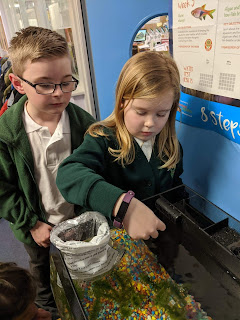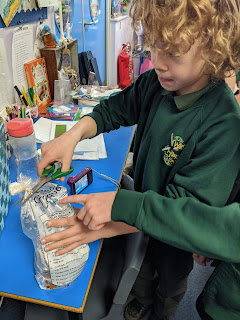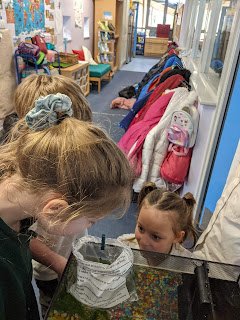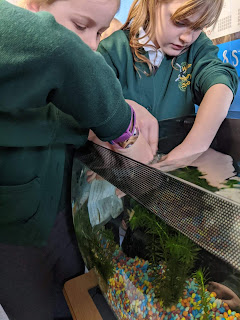The children really bought into the project and gave up their lunchtimes to help prep the soil. They were slightly obsessed with the worms and enjoyed creating the “wondrous wall of Wicor” with the turf. They drew scaled diagrams of the plots, using keys to show what was to be planted in each one. Once the ground was thoroughly raked to a fine tilth furrows were created in which the barley was to be sown. Richard had advised us that the furrows should be 10cm apart and at a depth of 3cm. We carefully measured and managed to fit in 21 furrows into the first plot. Each child then “walked the plank” carefully sowing the barley seed 2.5cm apart. We covered it over so the birds couldn’t feast on them!
Preparing and sowing the first plot was a fantastic way to spend the last couple of “normal” days at school before the closure due to Covid-19. The children have been so enthusiastic and committed to the project and being able to gather round it at the end of the day on Friday and celebrate a job well done was something really special.
23rd – 27th March, 2020
But the project continues… with a different set of children. While the school closed for the vast of majority, it remains open for the children of Key Workers and this intrepid bunch were just as keen to get involved. Miss. Moreton had to maintain a social distance this week but, being the dedicated person she is, prepared the furrows for us in advance.
The same number of furrows was created as in the first plot and the barley was sown in the same way. So, once the project was explained, the children were ready to walk the plank, carefully spacing the barley seed at 2.5cm intervals. As there was a mix in ages, all the way from Reception up to Year 6, it was lovely to see the older children helping, guiding and supporting the younger. They ended up taking the lead and were meticulous in ensuring the seed was spaced well.
It was then covered over, and it was time to sow the wildflowers. We used a mix of cornflower and common poppy seeds. The children loved looking at them and comparing the different sizes. To sow them, I took inspiration from the Running Hare by John Lewis-Stempel:
“How exactly does one broadcast wildflower seed naturally to achieve Ye Olde Cornfielde effect?...walk into the field, and just fling handfuls of seeds into the air as if I were a declaiming poet…Around and around I wandered, as happy as a sunbeam, throwing seeds to the wind.” P.102
Needless to say, the children (and I) loved this style of seed sowing and it was a pleasure to see the joy on their faces as they threw them to the wind. We trod them in and gave both plots a good water.





































